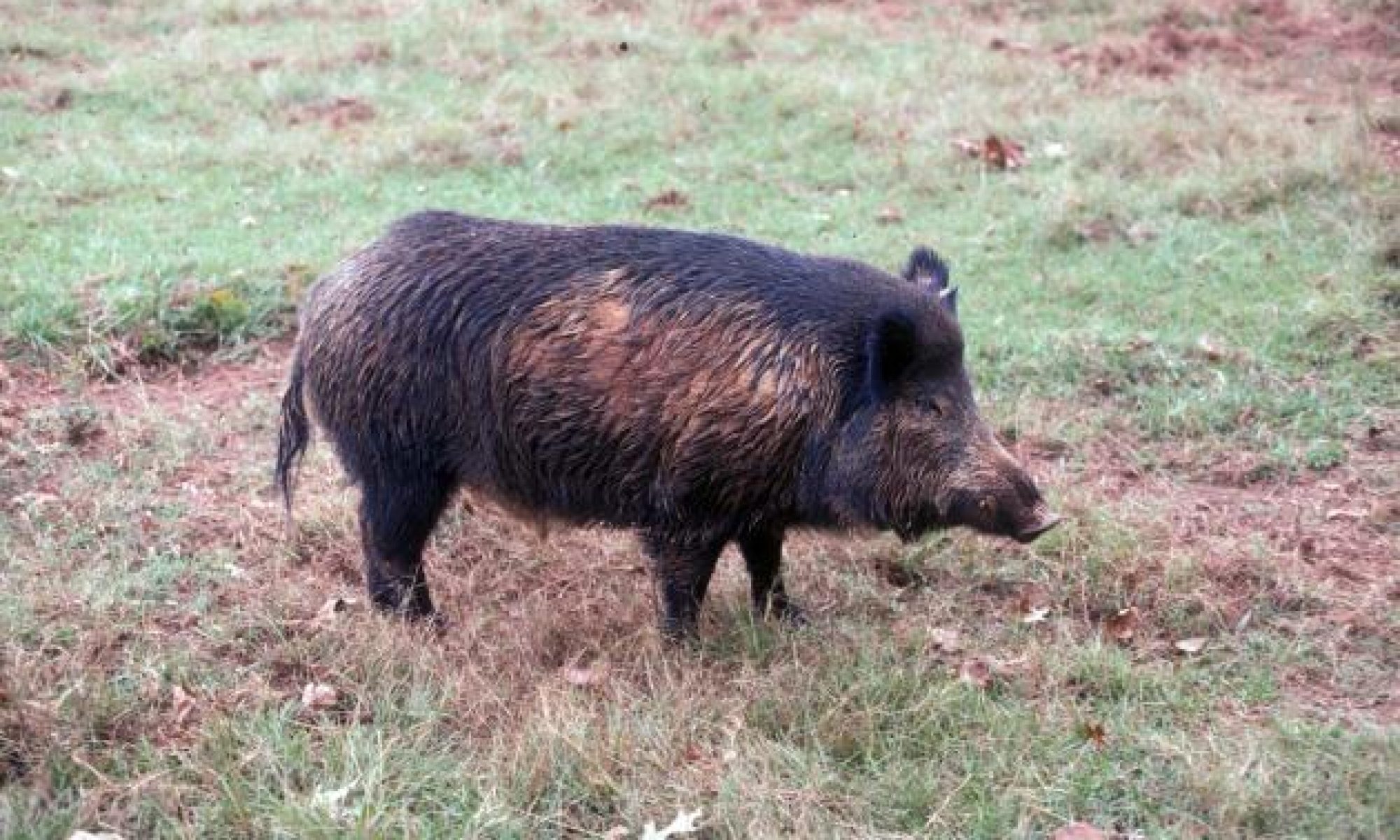Feral hogs are a growing nationwide problem in the United States at the present time. Not native to the Western Hemisphere, the presence of these animals here is solely attributable to both intentional and accidental introductions by man. All feral hogs (also called wild hogs) in the United States belong to the species Sus scrofa.
Brought to the United States during the early 1500s, feral hogs have had a long history in this country. In spite of a fairly constant presence here since the early 1900s, these animals have had a dramatic recent increase in both distribution and numbers in the United States. Between 1989 and 2011, the number of states reporting the presence of introduced feral hogs went from 19 to 39 or more states. This increase, in part natural, but largely man-made, has caused an increased workload and cost for land and resource managers in areas where these new populations are found. This is the direct result of the damage that these introduced animals cause. The cost of both impacts and control efforts has been estimated to exceed a billion dollars annually. The complexity of this problem has been further complicated by the widespread appeal and economic potential of these animals as a big game species. Feral hogs are a controversial problem that is not going away and will likely only get worse with time.
Feral hog populations grow quickly. They reproduce at a rate faster than any other mammal of comparable size, native or introduced; they can eat just about anything; and they can live just about anywhere. On top of that, feral hogs are both very difficult to either control or manage and, with the possible exception of island ecosystems, almost impossible to eradicate.
The solution to the feral hog problem has not been readily apparent. The ultimate answer as to how to control these animals has not been found to date. In many ways, feral hogs are America’s most successful large invasive species. All of which means that feral hogs are a veritable nightmare for land and resource managers trying to keep the numbers of these animals and the damage that they do under control.
